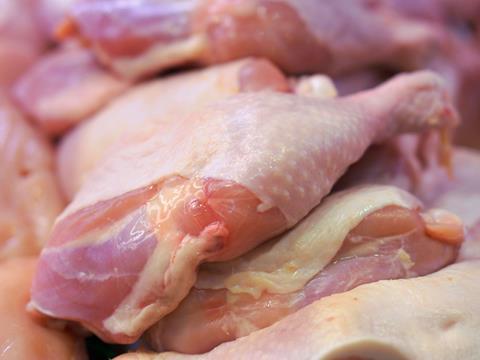
The UK’s food safety watchdog has hailed British retailers for their “commitment and responsibility” in tackling campylobacter, after its latest survey found levels of the bug had fallen further in supermarket chicken.
Just 5% of whole chickens from the nine major supermarkets sampled during January to March 2017 were infected with high levels of campylobacter (greater than 1,000 colony forming units per gram) - down from 7.8% during the same period last year, the FSA’s latest survey results revealed today.
Across the market - including a group of unnamed smaller retailers and butchers - 6.5% of chickens tested positive for the highest level of contamination, down from 9.3% for the same period last year.
M&S (2.5%), Morrisons (2.8%) and Waitrose (2.7%) had the lowest prevalence of high-level campylobacter infection, but none of the nine major supermarkets had prevalence estimates significantly above the average, the FSA said.
In contrast, 16.9% of chickens sampled from the smaller retailers and butchers were infected with the highest level of the bug, according to the survey.
Smaller retailers and butchers also had a higher percentage of chickens with any presence of campylobacter at 59%, compared with an average of 48.8% across the market - which was down from 50% during the same period last year.
The ongoing drop in infection among supermarket chickens suggested major retailers and processors were “getting to grips with campylobacter”, said FSA chairman Heather Hancock, who praised the industry for its “commitment and responsibility” over recent years.
“They have invested a lot of effort and money into interventions to tackle the problem and it is showing clear results,” she said.
However, there needed to be “more progress among the smaller businesses, to achieve real and lasting reductions,” Hancock warned.
The FSA survey was based on tests of 1,051 whole fresh chickens sampled during January to March 2017.







No comments yet